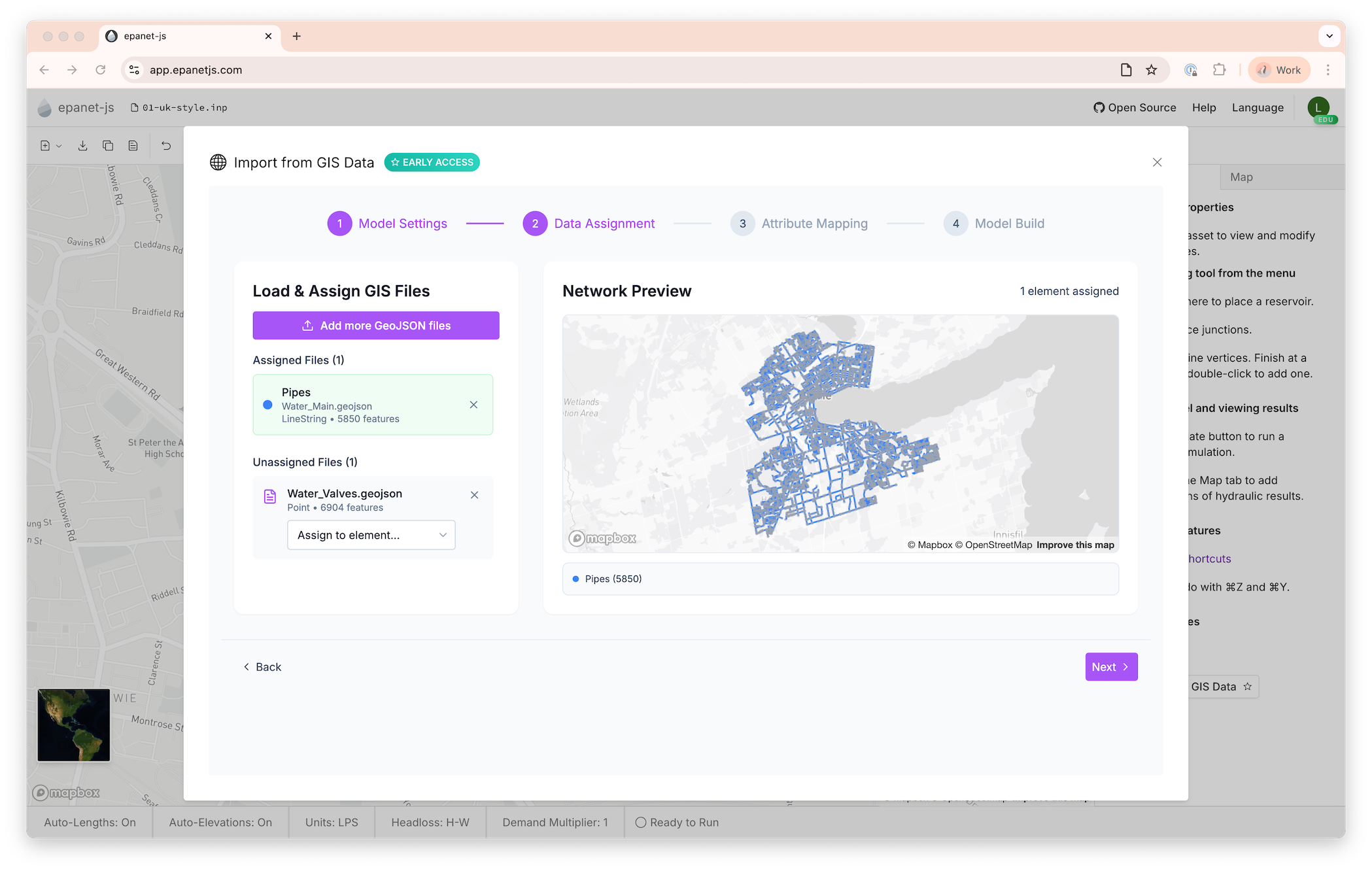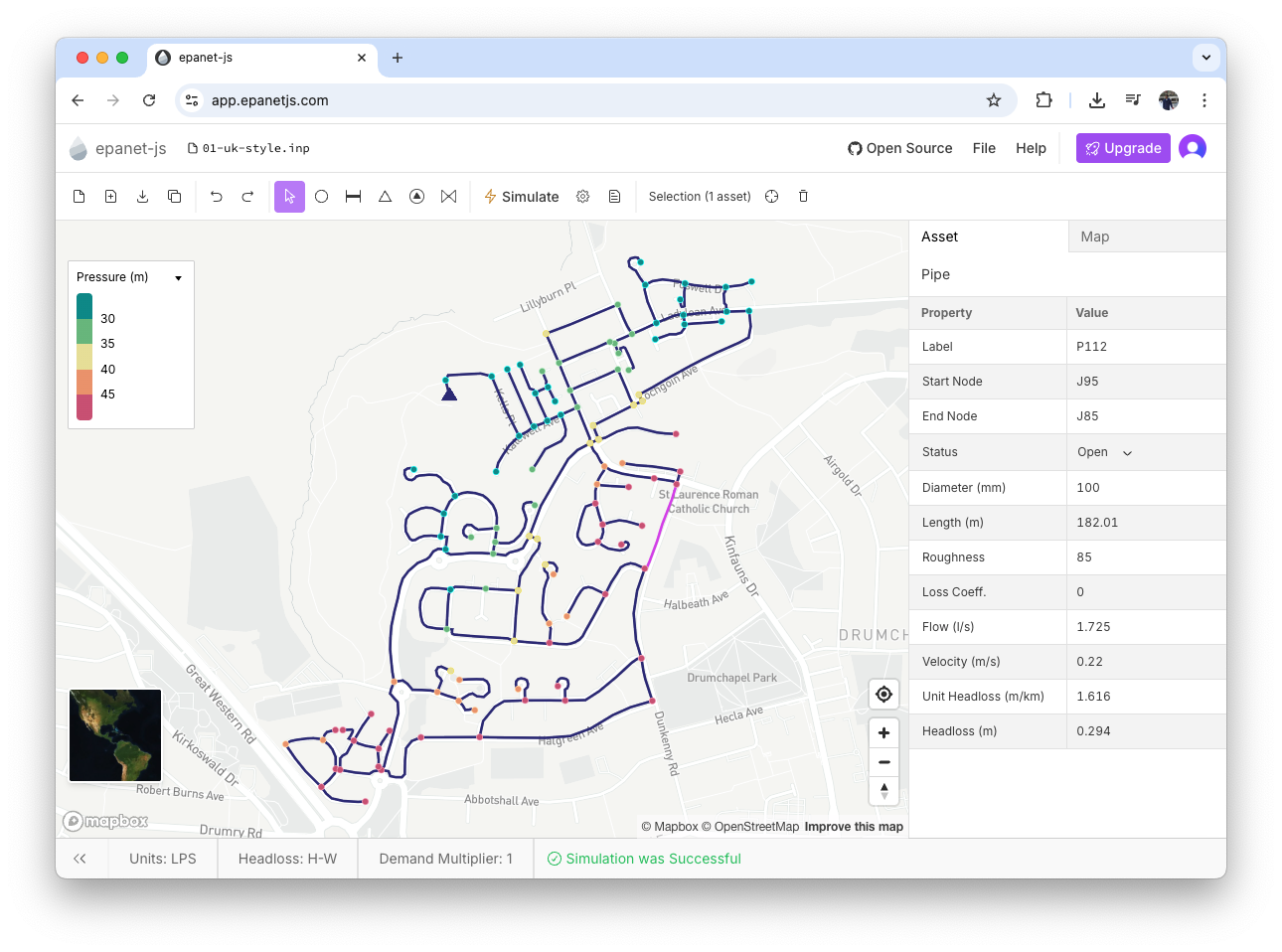epanet-js October 2025 Progress Report
Network Reviews, a New Teammate, and a Focus on Fundamentals
October has been a massive month of building and growing for the epanet-js team. We've been laser-focused on one of the biggest challenges in modeling: getting your data in and making sure it's correct.
This focus resulted in over 300 commits and totaling over 35,000 new lines of code added to the epanet-js open-source codebase in October alone!
We’re thrilled to release the new Network Review toolset, a major feature designed to help you validate, clean, and quickly prepare your model for its first simulation. It’s all about making it easier to find and fix common topology and data quality issues right after a GIS import.




